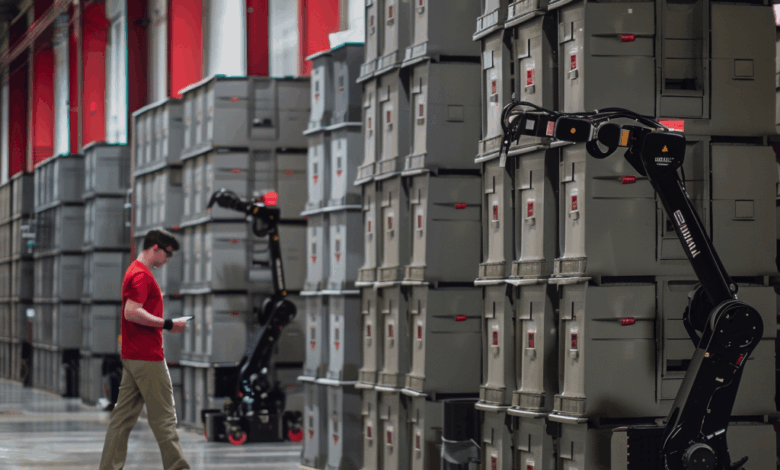
Manufacturing automation has been around for a long time. Humans have always looked for new ways of making processes more efficient to save time, money, and manpower. Among all of the tools people have developed, robots have made the biggest impact in manufacturing. And we’ve been working alongside them longer than many realize.
The first industrial robot was created in the 1950s, and since then, automation has evolved drastically, especially in the last decade. With advancements in AI marking a new trend, the automation space is undergoing yet another transformation. While traditional industrial robots have revolutionized manufacturing for large enterprises, a new generation of collaborative robots— designed to learn from humans and adapt to existing infrastructure—is finally making automation accessible to the small and medium manufacturers who form the backbone of American industry.
Barriers to automation
Automation and robotic systems can be out of reach for small and medium sized enterprises, or SMEs. One of the biggest reasons is cost. Industrial robots are expensive and businesses not only have to pay for the hardware but also for systems integration, installation, and custom programming. Deployment of these systems can take months and maintenance and training can lead to additional costs.
What’s particularly challenging is that implementation costs—not the robot hardware itself—can account for up to 70% of total automation expenses. For SMEs operating in older ‘brownfield’ facilities, these costs become prohibitive as significant retrofitting is required to accommodate traditional automation solutions. With the average US factory now over 25 years old, the reality is that many industrial robotic solutions remain financially and logistically out of reach for these manufacturers.
Additionally, many of these robotic systems require skilled engineers to operate, which can be costly to find, hire, and retain. On top of that, these challenges are also coupled with the existing belief that automation will eliminate jobs.
Why we can’t leave SMEs behind
SMEs are the backbone of the global economy. In the US, they make up 98% of the total industries and contribute to trillions of dollars in economic activity. It is essential that they have the capability to adopt the same automation tools that large companies already use. Automation can make companies more productive and resilient to change, and excluding SMEs from that movement risks leaving a large portion of the economy behind.
But while they make up most of the industries in the US, SMEs only contribute to about less than half of the US total GDP, with that number continuing to decrease. This gap between output and employment force is due to low productivity. SMEs are doing a lot with fewer resources and often outdated tools. Giving them access to automation would help close this gap and allow them to increase output without needing to expand staff or floor space.
Why cobots
Cobots are designed to work alongside humans rather than replace them. They are more compact, easier to set up, and more affordable than traditional industrial robots. Most cobots have user-friendly software and can be operated by anyone, without the need for extensive training to technical knowledge.
Cobots are a better fit for enterprises that have smaller floor spaces since they often come in smaller sizes and are safe to operate without physical safety barriers. And, unlike older automation systems, cobots don’t require months of deployment or a team of engineers to run.
Most manufacturers using cobots also considered them easier to program and deploy than traditional robotic systems, which is a major benefit for businesses that are just starting to explore automation.
Most importantly, implementing cobots does not require completely remodeling existing brownfield manufacturing sites, helping manufacturers save both time and money. Maintaining these sites is also more practical, allowing companies to retain their workforce and supplier relationships while remaining in prime shipping and receiving locations, a rare advantage given today’s limited commercial real estate.
Economic uncertainty
It is no secret that the current trade environment has created a lot of instability and SMEs have been especially vulnerable to rapidly-shifting economic policies. Many of them sell imported goods or rely on imported materials to make their products. For smaller companies these rising costs are hard to absorb and they are forced to pass them on to customers, which can reduce sales.
Cobots can reduce labor costs by taking over repetitive, labor-intensive tasks like packaging and sorting which can allow existing staff to focus on higher value work. Since machines are also less prone to errors and downtime, this can help lower operational costs over time. These savings can help SMEs keep their operations in the US and offset the higher wages.
The robotics industry needs to empower SMEs to adopt automation by continuing to develop accessible solutions like cobots, which can help bring smaller businesses into the fold. AI and automation are transforming manufacturing and have the potential to make the industry more adaptable in the face of rising costs and trade disruptions while also increasing competitiveness and improving product quality.





